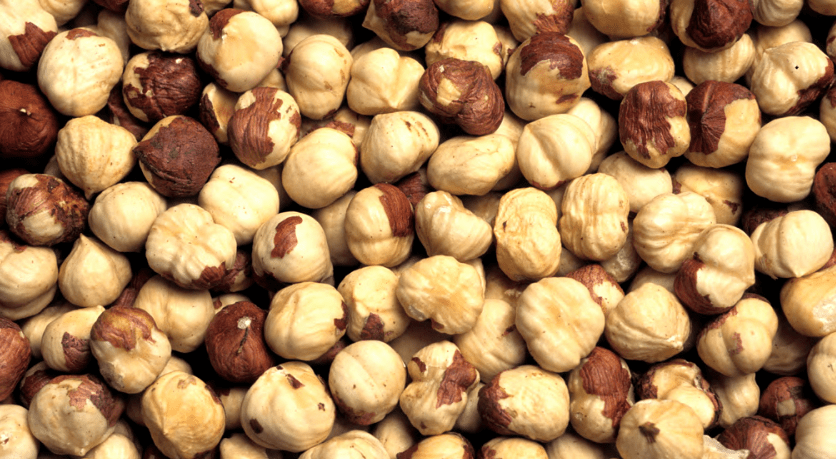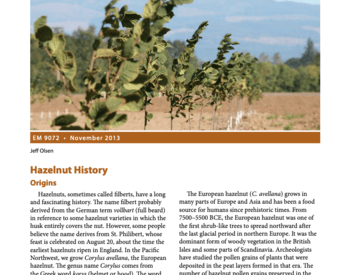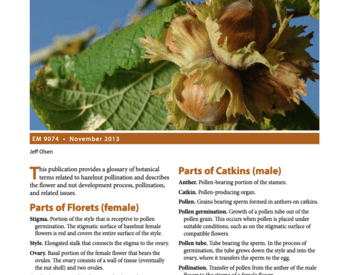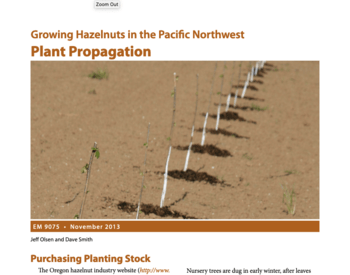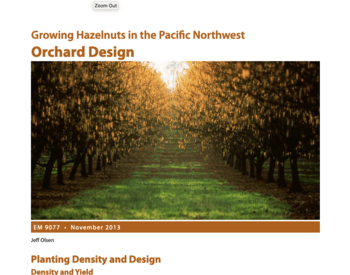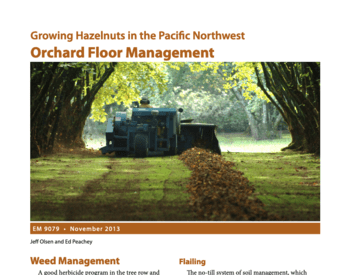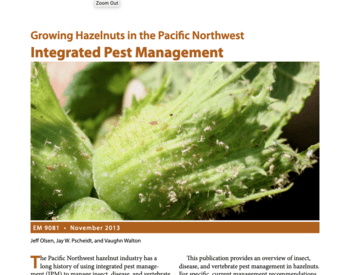Hazelnut Varieties
The tables in this publication summarize characteristics of the main hazelnut varieties produced commercially in the United States, list varieties’ susceptibility to eastern filbert blight (EFB), and show varieties’ compatibility with each other for pollination.
Barcelona is the principal hazelnut variety grown in the Pacific Northwest, accounting for more than 60% of the acreage in Oregon. It is used in both the kernel market and the in-shell market, which favors its round shape and superior flavor. Barcelona kernels have a coarse, brown, skin-like pellicle (outer coating), which is very difficult to remove completely, even after roasting. However, some processors have found ways to remove the pellicle. Many characteristics of Barcelona are undesirable for commercial producers. Barcelona trees tend to bear a heavy crop only every other year and produce a high percentage of blank nuts.
The variety Daviana had been used extensively as a pollinizer for Barcelona. However, it is very susceptible to EFB and should no longer be planted. It also is susceptible to filbert bud mite (Phytocoptella avellanae Nal.), which causes blasted or deformed flower and vegetative buds. We recommend replacing Daviana with York, a variety with the same pollen shed timing and the EFB resistance gene.
The Oregon State University hazelnut breeding program is continually developing varieties that have EFB resistance, good annual production, and more desirable kernel characteristics, such as fewer blanks and kernel defects.
For More Information
Many Oregon State University Extension publications on hazelnut production are available through the OSU Extension Catalog: http://catalog.extension.oregonstate.edu/
This information is provided for educational purposes only. If you need legal [or tax] advice, please consult a qualified legal [or tax] adviser.
Trade-name products and services are mentioned as illustrations only. This does not mean that the Oregon State University Extension Service either endorses these products and services or intends to discriminate against products and services not mentioned.
Use pesticides safely!
- Wear protective clothing and safety devices as recommended on the label. Bathe or shower after each use.
- Read the pesticide label—even if you’ve used the pesticide before. Follow closely the instructions on the label (and any other directions you have).
- Be cautious when you apply pesticides. Know your legal responsibility as a pesticide applicator. You may be liable for injury or damage resulting from pesticide use.
© 2018 Oregon State University.
Extension work is a cooperative program of Oregon State University, the U.S. Department of Agriculture, and Oregon counties. Oregon State University Extension Service offers educational programs, activities, and materials without discrimination on the basis of race, color, national origin, religion, sex, gender identity (including gender expression), sexual orientation, disability, age, marital status, familial/parental status, income derived from a public assistance program, political beliefs, genetic information, veteran’s status, reprisal or retaliation for prior civil rights activity. (Not all prohibited bases apply to all programs.) Oregon State University Extension Service is an AA/EOE/Veterans/Disabled.
